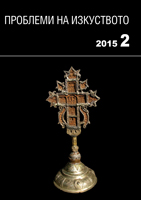Author(s): Zorica Manojlović / Language(s): Croatian
Issue: 68-69/2015
The paper is based on research of archival, bibliographical and oral sources on a Croatian Orientalist Milivoj Mirza A. Malić (1897-1935), conducted during 2013 and 2014. His life and professional choice took him far away from Sušak, the town of his early youth, to which he returned after being absent for a long time and passed away after long illness, still quite young. He was born in Imotski; spent his youth days in Sušak; lived and worked in Zagreb, Spain and France. Since oriental philosophy was not much developed in Croatia at the time, his work and scientific interest was valorized elsewhere, primarily in Bosnia and Herzegovina, more than in Croatia, and such was the memory of his persona. Although, at the moment of his death, in 1935, many newspapers wrote of him as an expert Orientalist and doctoral dissertation Bulbulistan du Shaikh Fewzi de Mostar, poete herzégovinien de langue persane (Librairie L. Rodstein, Paris, 1935), which heralded an important scientific potential, it is sad that, outside his family, the Malićs of Rijeka, he was almost unknown in Croatia. Apart from his intimate circle, he is remembered as an prominent member by the Islamic religious community, which he joined as Mirza Abdurahman. The article provides information on Malić, available in various archives in Croatia and Bosnia and Herzegovina, libraries of Croatia, Bosnia and Herzegovina and Serbia as well as in private family archive of the Malić- Rossi family.
Family members and friends provide particularly valuable oral testemonies. Malić’s personal fund in Gazi Husrev-bey’s library of Sarajevo was temporarily unavailable due to technical reasons, so information personal details in this text are based only on biographical sources. By this moment, the author has not researched him personaly.
More...









![Holy Places in the Region of Sofia: Cults, Narratives, Images [Свети места в Софийско: култове, разкази, образи]. Edited by Albena Georgieva. Sofia: Professor Marin Drinov Academic Publishing House, 2013](/api/image/getissuecoverimage?id=picture_2016_24533.jpg)


